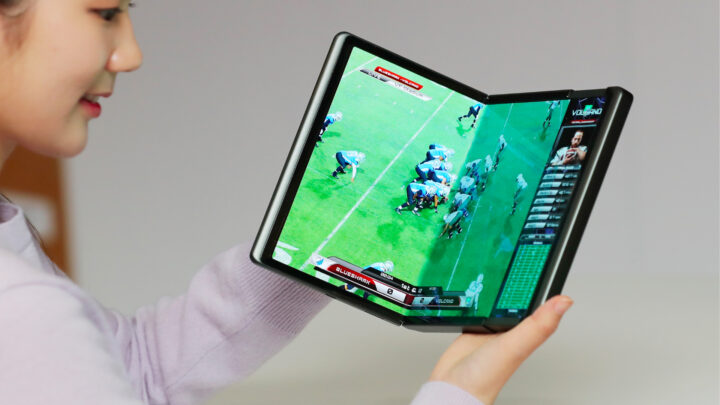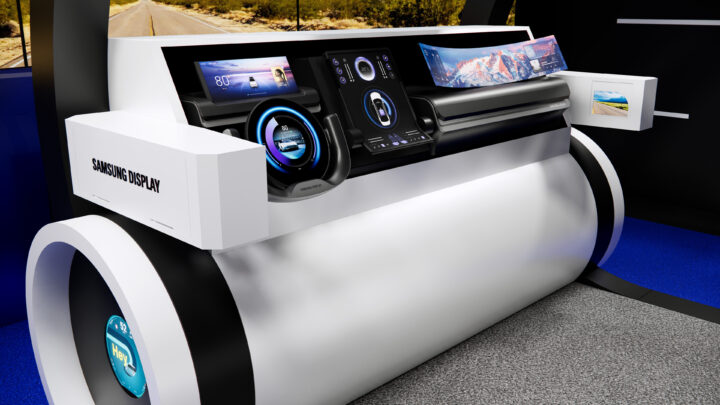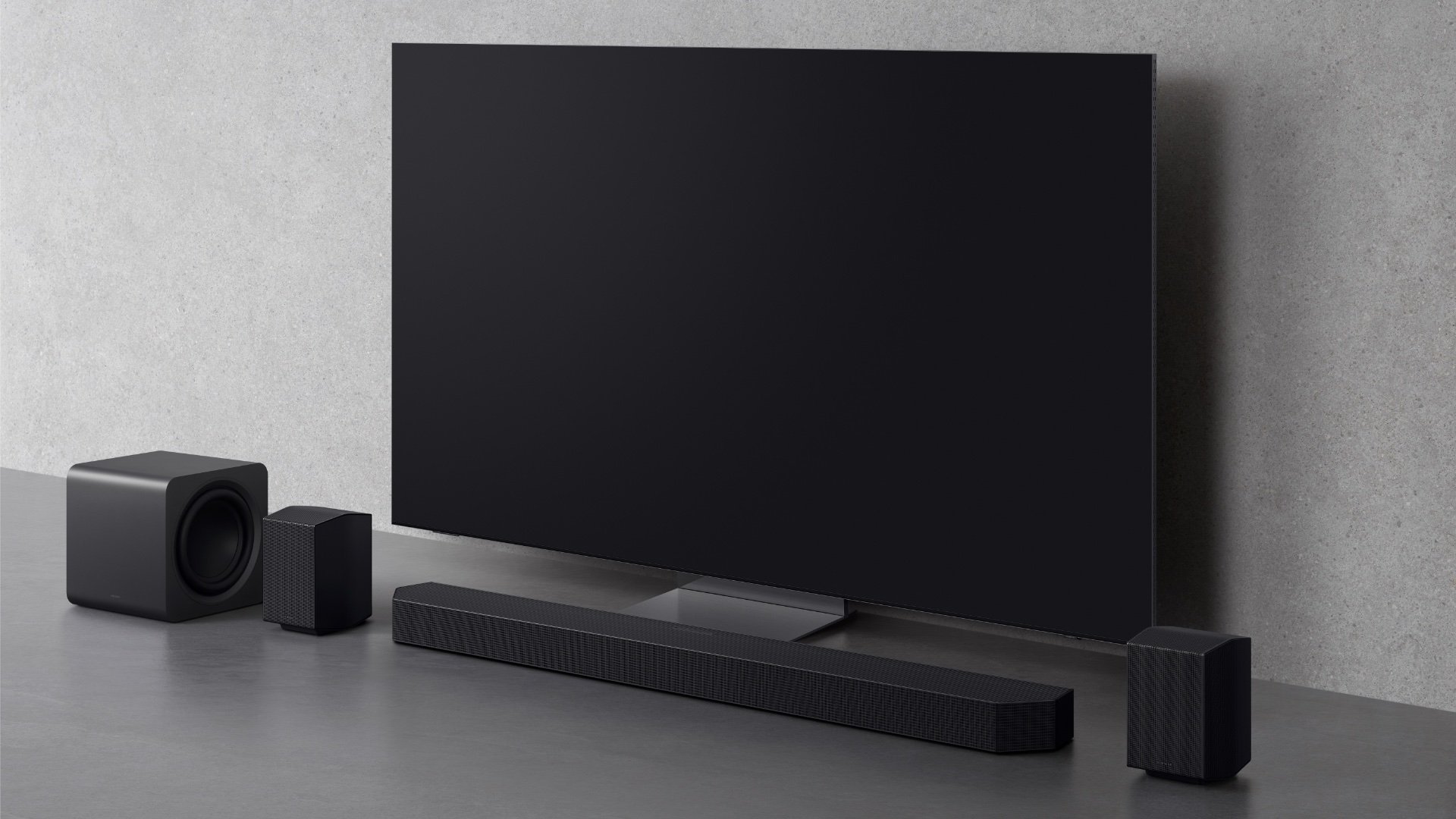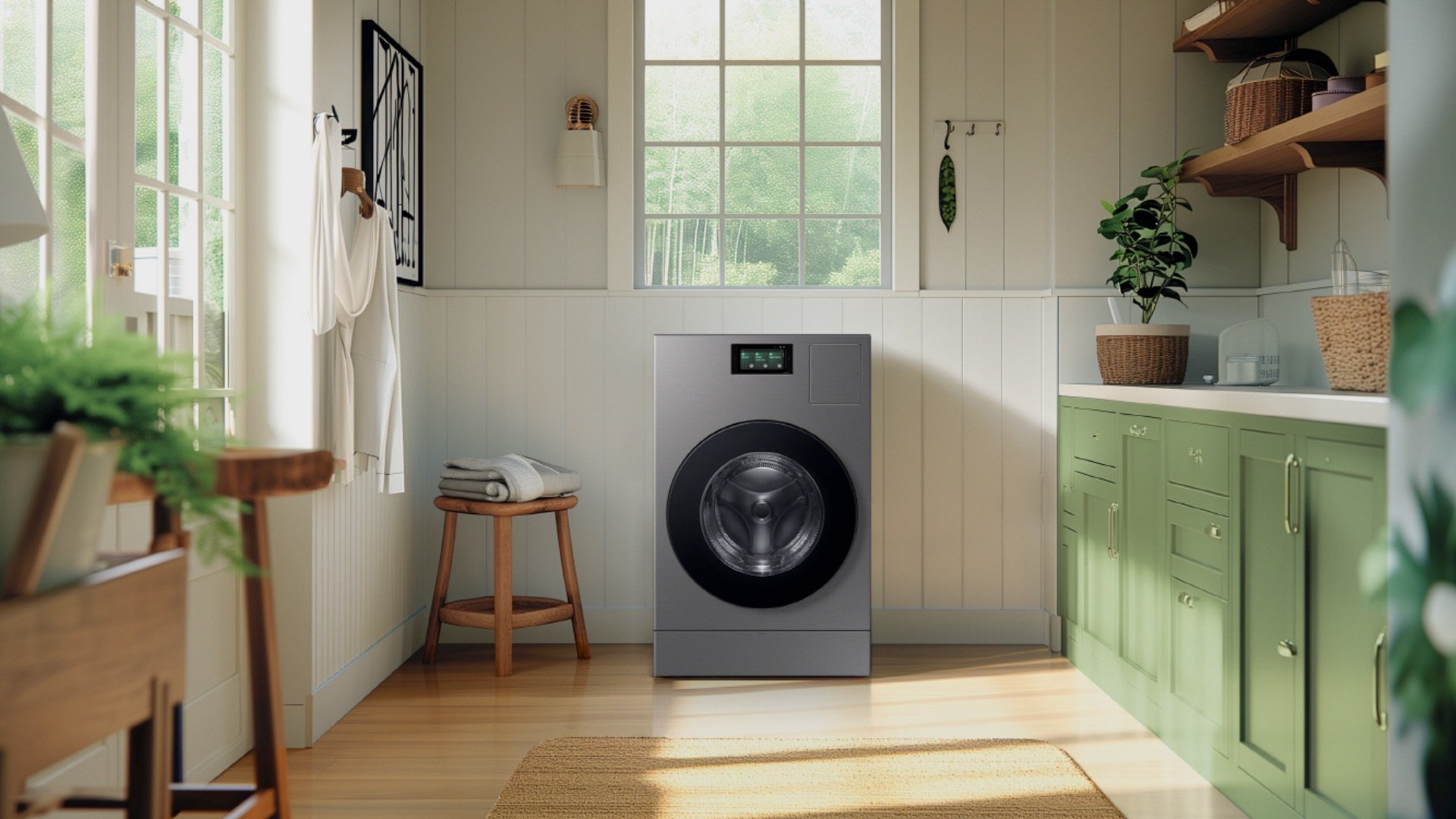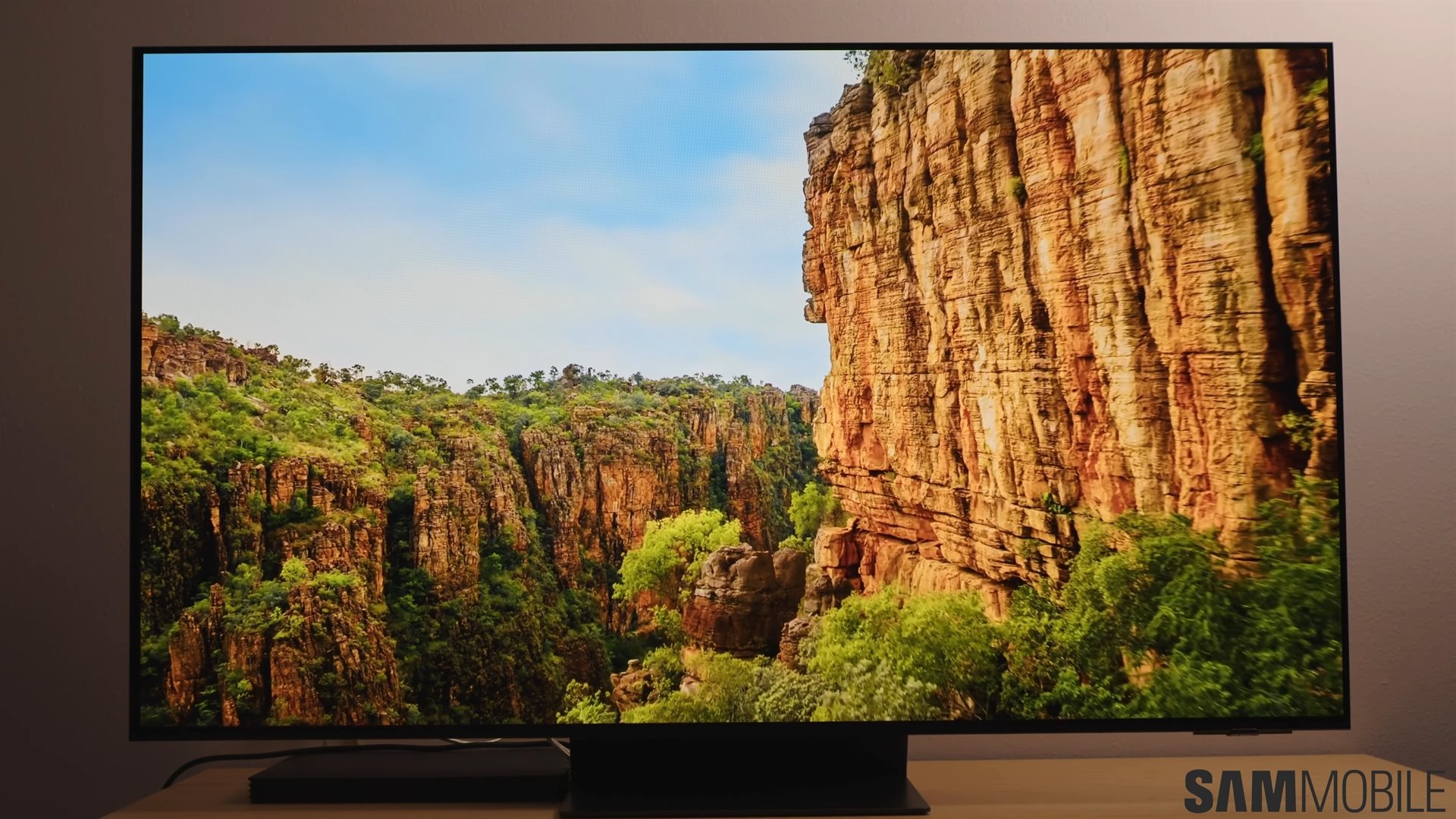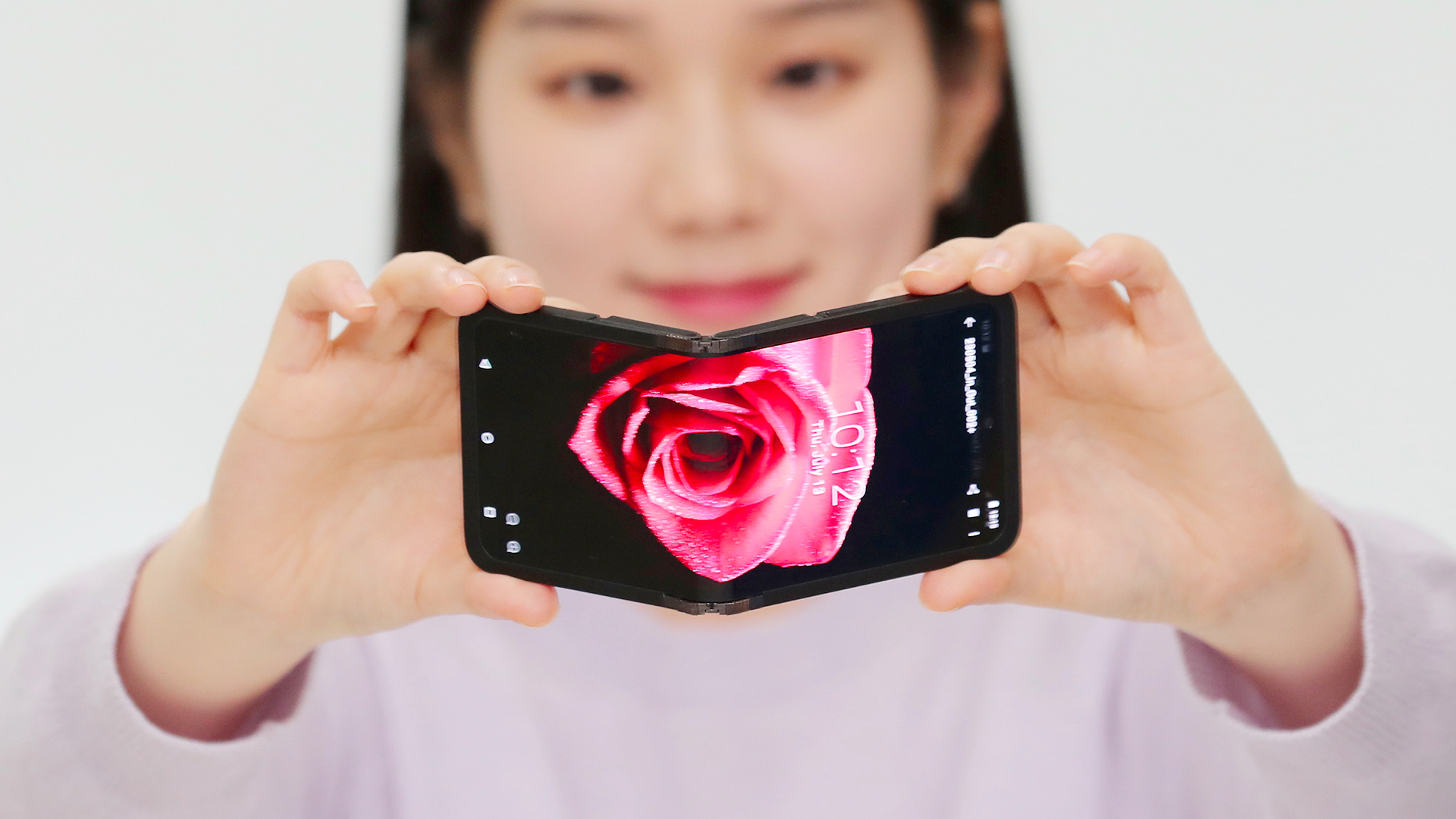
All of them are being displayed at Samsung Display's CES 2024 booth in Las Vegas, USA.
OLED screen for a new Galaxy Z Flip phone that can fold outwards?
Samsung Display's new Flex In & Out OLED panel can fold inwards and outwards. Since it can be folded 360 degrees, the company says that a phone won't need a separate cover screen, like the one found on a Galaxy Z Flip 5. Since there is no need for an external screen, the device could theoretically be thinner or have a bigger battery or better cameras in the same profile.
However, it would also mean the foldable screen is always exposed and could get damaged in case of a fall. To deal with that, Samsung Display made the panel stronger, and at the booth, the company showcased several durability tests, including extreme temperatures (-20°C to 60 °C), bouncing basketballs on the screen, immersing the device in water, and rubbing sand on the screen.
A Samsung Display representative said, “In&Out Flip is a technology that can provide a new alternative for consumers who prefer bar-shaped smartphones due to the thickness of foldable products. When folded outwards, both the front and back of the product can be used as a screen, creating a new user experience.”
Rollable Flex and Flex Hybrid OLED panels showcase what's possible in the future
The South Korean firm also displayed other types of OLED screens, including Rollable Flex and Flex Hybrid. The Rollable Flex is a rollable OLED panel that can be rolled into 1/4th of its original size. The Flex Hybrid is an OLED panel that can fold and slide at the same time. Samsung has showcased similar concepts at MWC 2023, and you can watch our hands-on video of those previous concepts below.
Samsung Display is also making circular, curved, and rollable OLED panels for cars
The company showcased several OLED panels for autonomous and connected cars, showcasing the digital cockpit of the future. The company's 9.4-inch circular OLED screen is already being used in the new electric MINI Cooper. There is also a roll-up 12.4-inch OLED panel that hides in the front passenger seat and then rolls up when a rear passenger wants to watch videos or access some functions. On the dashboard, a rollable screen can stay in a smaller size when the driver wants less distraction from the screens and extends into a bigger screen while watching videos when the electric car is stationary while charging.
A Samsung Display executive said, “Cars are now evolving into a mobile space beyond just a means of transportation. OLED products combined with foldable and slidable technologies will accelerate this transformation.”
Samsung's UT (Ultra Thin) OLED panels make laptops even slimmer
The company also showcased its UT (Ultra Thin) OLED panels that are just 0.6mm thin, which is similar to the thickness of a business card. This allows laptop makers to build slimmer and more compact laptops or cram in more battery than laptops with LCD screens. These OLED panels now utilize 100% oxide instead of amorphous silicon (a-Si), which reduces flicker at low refresh rates. They can also go as low as 1Hz in variable refresh rate mode to save power and improve battery life.
A Samsung employee said, “By applying a new module process, we have reduced the thickness while maintaining the same strength. We are confident that this will help laptop and tablet manufacturers increase portability and differentiate their designs.“












